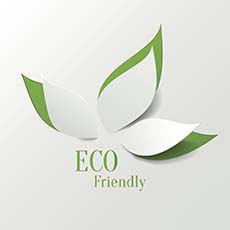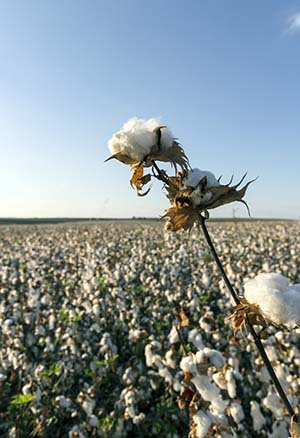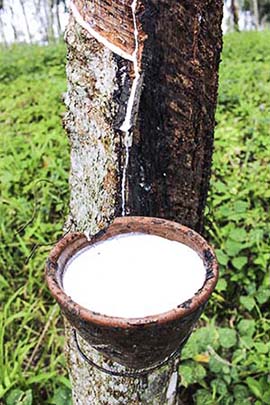You’re Spending About One Third of Your Life Here – Do You Really Want to Spend it Inhaling Toxic Chemicals?
Think about it. Over your lifetime, on average, you’ll likely spend about 26 years sleeping in your bed. And that doesn’t include any of the other time you may spend there.
For the reasons you’re about to see, the mattress you’re sleeping on may be one of the most neglected – and overlooked – aspects of your health, in ways you might not even realize.
Go ahead and ask yourself… Do you know what you are sleeping on – really?
Do you know what your skin is absorbing and your lungs are inhaling during the precious one-third of your life?
The mattress you relax onto each night, night a fter night, may be giving you more than you expect or want.
Big Tobacco’s Fingerprints: All Over Your Mattress?
Decades ago, cigarette manufacturers came under the gun for their smoldering cigarettes that were starting house fires and killing people.
Their solution? Make household furnishings – and mattresses – less flammable!
That was the beginning of strict laws requiring the addition of flame-retardant chemicals to all upholstered furniture and bedding products in the state of California. Over the years, manufacturers started adding them to all mattresses sold in the US.
Fast forward to July 1, 2007… All US mattresses are now required to meet flame retardant standards.Some of the most common chemical fire retardants used today are brominated fire retardants (BFRs), and, before 2005, PBDE chemicals (polybrominated diphenyl ethers).
Unfortunately, these toxic chemicals are the least expensive way for mattress manufacturers to meet fire standard requirements.
PBDEs have been detected in 97% of Americans.
The good news is you likely won't find PBDEs in newer foam products as they were banned in the mid-2000s.
But the bad news is the chemicals that have replaced them may be just as bad!
For example, organophosphate flame retardants (OPFRs) are frequently found in conventional mattresses. Some OPFRs have been identified as known or suspected carcinogens or neurotoxic substances.
Beware of Green-Washed Mattresses

Many companies today strive to be “green” – or at least want you to think they are concerned about your health.
And mattresses are no exception… You’ll see labels that say “green” or “eco”, implying these mattresses are safer for you to sleep on.
“Green” or not, all manufacturers are required to meet strict standards for flammability.
Mattresses must meet the Federal mattress standard, 16 CFR 1633 that requires the finished mattress be able to withstand a severe and lengthy open flame ignition test.
So how do mattress manufacturers meet the standards?
Many use barrier materials such as fire-resistant fiber batting or boric acid treated cotton fiber wrapped around the mattress foam.
Boric acid has become a standard method for reducing the flammability of cotton. Boric acid is used as a pesticide and insecticide.
It’s hardly a substance you want to sleep on at night!
Keep in mind… Since mattresses don’t need to be labeled as to what’s in them, you only have trust to go on.
If They’re Not Safe For You, What About Your Precious Newborn?
If the potential health concerns of flame retardants are of concern to you, what about their potential effects on developing bodies? These chemicals show up frequently in products marketed for babies.
In one study, 80 percent of samples collected from 101 baby products, including car seats, baby carriers and portable mattresses, contained fire retardants.
More Than Just Flame Retardants…
If I haven’t yet raised the red flag high enough to caution you about laying your newborn – or your child – down to rest on their crib mattress or nap mat, now there’s even more reason for concern…
A new study by a leading university took a closer look at the foam from 20 new and old crib mattresses.
The conventional crib mattresses were found to release up to 30 different types of volatile organic compounds, or VOCs in significant amounts -- and new crib mattresses released four times as many fumes as old mattresses!
Consider purchasing an organic mattress for your infant or toddler. It does cost more than a non-organic mattress, but isn’t your child worth it?
To be sure you’re getting a healthier pad or mattress without questionable chemicals, look for ones certified non-toxic and organic to the GOTS standard and certified for emissions to the GREENGUARD Gold standard.
Cotton: Not the Fiber You’ve Been Told It Is

What about cotton – one of the most widely used materials in bedding today?
First, there’s a major difference between regular cotton and organic cotton.
Here are some facts you may not know about conventionally grown cotton:
- Cotton farming takes up only about 3 percent of the world’s total farmland, but uses 25 percent of the world's chemical pesticides and fertilizers
- Each acre of cotton harvested every year in the U S is sprayed with an average of 13 pounds of pesticides, herbicides, and defoliants
- The World Health Organization classifies half of cotton crop chemicals each year as “hazardous”
- Toxic defoliating chemicals are used to harvest the cotton
And this long list doesn’t even include the billions of pounds of synthetic fertilizers used for cultivating cotton. The runoff from these fertilizers can create aquatic "dead zones" in waterways, killing off species of aquatic life.
Organic Cotton: One of Nature’s Greatest Gifts
Organic cotton is the purest form of cotton, grown without synthetic pesticides, herbicides, fertilizers, and defoliants and is grown without genetically modified organisms (GMOs).
Organic-certified farmers grow organic cotton with the help of natural fertilizers, beneficial insects, and innovative weeding techniques. These systems, at the same time, replenish and help maintain soil fertility while enhancing biodiversity that protects air and water.
In mattresses, organic cotton provides a better alternative to chemically-treated foams. Organic cotton mattresses not only provide a sleeping environment without toxic chemical additives, they’re comfortable to sleep on as well.
Latex: By The Time It’s Finished, Every Drop Isn’t Equal

Latex is created from the sap of the rubber tree, typically grown in Indonesia, Sri Lanka, Malaysia, and Thailand.
Latex is biodegradable, and because the rubber for latex is tapped from the trees rather than requiring them to be harvested, it’s considered a sustainable industry.
Truly a win-win industry, a 12-acre plantation of 2,500 rubber trees can remove 143 metric tons of carbon dioxide from the environment each year. And a single tree yields latex for 30 years.
Latex certified to the Global Organic Latex Standard (GOLS) assures that the latex sap comes from certified organic rubber plantations. In addition, GOLS also maintains standards for human rights and worker safety.
The best use of latex is for comfort, and when combined with encased coils as support it makes for an incredibly comfortable mattress.
How Do You Know If Your Organic Mattress is Really Organic?
By now you’re likely realizing the importance of an organic mattress made without chemical flame retardants. But how can you tell if you’re getting the “real deal”? Make sure it’s from a company you can trust.
Dr. Mercola’s Healthy Home Certified Organic mattresses and bedding products are manufactured for us by Naturepedic, a company known for organic integrity and inventive designs.
Naturepedic mattresses not only pass flammability standards without chemical flame retardants, they are also third-party certified. Below are a few of Naturepedic’s certifications.
© Copyright 1997-2015 Dr. Joseph Mercola. All Rights Reserved.http://products.mercola.com/organic-mattress